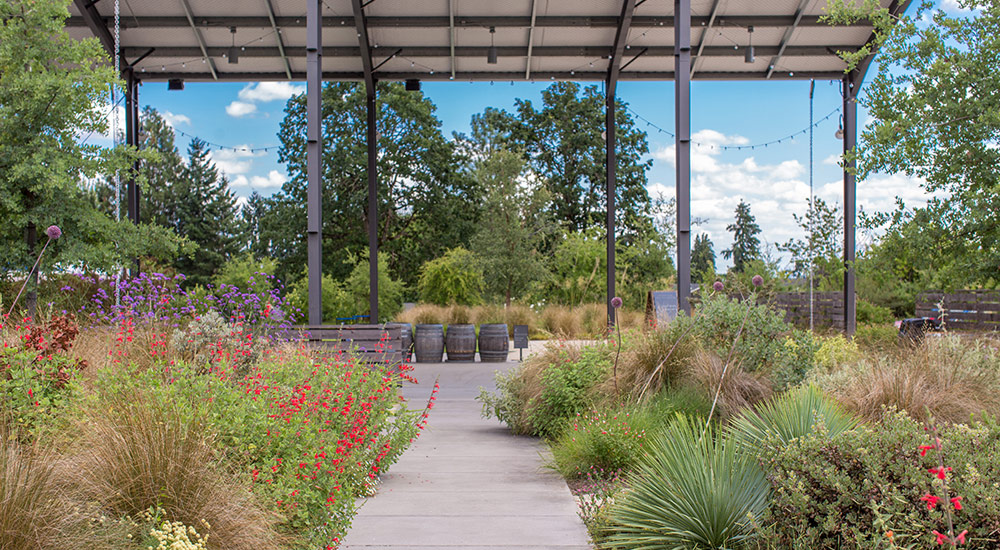I don’t usually do this, write about a particular landscape with which I have no history, so this is a bit of a departure for me. I’ve know Sean Hogan for quite a few years, consider him a friend and a highly influential mentor of sorts. His encyclopedic knowledge of plants, his boundless enthusiasm, has been infectious and inspirational over much of my career as a horticulturist while I was working for Portland Parks and Recreation. I’ve benefited from the existence of his nursery and his commitment to horticulture picking his brain for plant and design suggestions as I attempted to broaden my own repertoire.
Over the last several years sustainable design has become a ‘thing’. It is discussed in academia, amongst private and public land managers and designers. Too often it has become politicized, twisted into what people want. By doing this the concept of sustainable design is in danger of becoming yet another ’empty’ buzz word, stripped of its value by those with their own agendas and ambitions who attempt to wring every bit of value out of it for their own ends. Sustainable landscapes, when you come down to it, are essentially well designed in terms of horticultural practice, paying very close attention to site conditions. Plants are chosen with the utmost attention to ‘fit’ because such plants will require less in terms of resources to thrive, including little to no supplemental water, pesticides, fertilizers or any other outside inputs…because that is what a truly sustainable landscape is, a landscape that is capable of meeting its own needs on site. Typically today, our landscapes don’t do this, we pour water on them and throw labor and herbicides at them to maintain them as collections of individual plants, often out of balance collections, their separate plants, standing on their own with little ‘relationship’ to their neighbors, while the spaces in-between them are maintained ‘clean’ and free of growth, a completely unsustainable condition. We too often follow an aesthetic that puts nature and site second. The fact that Sean has obviously put a lot of thought into this design in terms of the ‘needs’ of the plants, is one of the things I like about the Argyle Winery landscape in Dundee, Oregon…
Read Entire Article and View Photos on GardenRiots
